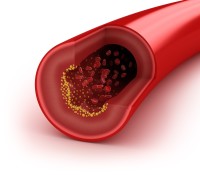October is breast cancer awareness month. Usually, this means that women will be reminded to get their mammograms done. However, getting a mammogram is geared towards “early” detection, but not really prevention of breast cancer. In order to lower one’s risk for breast cancer, one needs to know what raises it in the first place.
Breast cancer these days is like an epidemic. It wasn’t like this decades ago. Our lifestyles and our environment have changed and contributed to the increase in the incidence of this disease.
The most common type of breast cancer is the type that has estrogen and progesterone receptors, and I will limit this article to that type of cancer.
Estrogen and progesterone are important hormones that should always be balancing each others’ effects at every monthly cycle and throughout a person’s lifespan. When estrogen becomes dominant compared to progesterone, which is a very common scenario in today’s environment, many bodily functions can change. Some of these estrogen-dominant changes in the breasts include breast pain and tenderness, fibrocystic breasts, and dense breasts on mammogram. In other parts of the body, estrogen dominance can present as heavy or prolonged menstrual periods, formation of fibroids, endometriosis, weight gain and swelling, oversensitivity, insomnia, anxiety, gallbladder disease, and many others. When estrogen’s dominance is prolonged (for many years or decades) and the body is unable to efficiently clear or detoxify its harmful metabolites from the body on a regular basis, cancerous changes happen to cells of hormone-sensitive organs like breasts, uterus, and ovaries. Thus, preventing estrogen dominance and increasing our ability to detoxify will help reduce our risk for these breast, uterine, and ovarian cancers.
What are the causes of estrogen dominance? Among them are use of birth control pills, use of estrogen (especially synthetic estrogen) without any or adequate progesterone, exposure to estrogen-like substances in the environment (e.g. plastics like BPA, pesticides, hormone-treated conventional meats, dairy and poultry, etc). Obesity, high stress, overconsumption of refined carbohydrates and sugars, nutritional deficiencies, suboptimal liver and gut function (like heavy alcohol use, constipation, etc.), sedentary lifestyle, and chronic inflammation of various causes in any part of the body are also scenarios where estrogen dominance can occur.
So, how does one lower their risk of breast cancer? Yes, you got it…by avoiding all the above scenarios! It is not an easy task, so here are a few simple tips:
1. Eat a lot of vegetables everyday, especially those from the broccoli family (kale, collard greens, cauliflower, brussel sprouts, broccoli sprouts, etc). Avoid refined carbohydrates, sweets, and pro-inflammatory trans-fats. Consume less conventional meats and dairy, buying organic, grass-fed, or free-range whenever possible. Know the “dirty dozen” fruits and vegetables, as they are loaded with pesticides, and ideally should be bought organic. Flaxseed, mushrooms, green tea are also excellent foods for lowering harmful estrogens.
2. Aim for ideal body weight. Excess fat, especially around the belly, produce extra estrogen. Get regular exercise.
3. Learn to manage stress, get enough sleep, avoid harmful substances like tobacco and unnecessary drugs.
4. If you are on any kind of hormone replacement, ask your doctor to check your hormone levels. The usual venous blood draw from your arm is not always the best test, especially if you are using a cream or a patch. I also recommend testing for estrogen metabolites in the urine, as a few of these are harmful and known to induce genetic changes that lead to breast cancer. If your doctor does not check these hormone levels and their urinary metabolites, I think you should find a doctor who does.
So, in this month of breast cancer awareness, do not just get a mammogram. Learn about your risk factors and how to lower them.
Zorayda J. Torres, MD


















